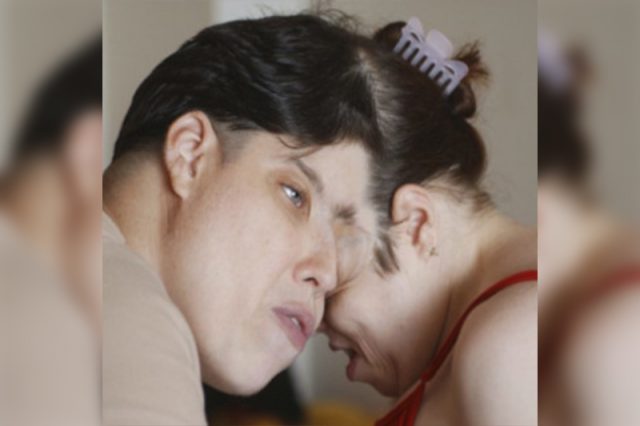The world’s oldest conjoined twins, Lori and George Schappell, recently died, aged 62.
Doctors predicted that the twins (who were joined at the skull and shared 30% of their brain) would not live past the age of 30. But the twins defied expectations and managed to live long and successful lives.
The twins made headlines in 2007 when George came out as transgender.
Conjoined twins are incredibly rare, accounting for about one or two in every 100,000 births. Sadly, about 60% of conjoined twin births are stillborn or die shortly after birth. Conjoined female twins are three times more likely to survive than males.
Although all conjoined twins are identical (monozygotic), recent genetic analyses have revealed that there are differences in genes, including those linked to growth and development.
Because conjoined twins are so rare, it is difficult to know exactly how they come about. However, there are two possible causes, both of which have some evidence to support them, but neither can completely account for the full range of presentations that are seen.
The first process is “fission”, where a single fertilized egg does not fully split during the process of forming identical twins. The second process is “fusion”, where two fertilized eggs fuse soon after fertilization occurs.
Types of conjoined twins
There are 15 recognized types of conjoined twins, based on the various places their bodies fuse.
The most common fusion site is the chest and abdomen (thoraco-omphalopagus). Other common fusion sites are the chest (thoracopagus), the abdomen (omphalopagus) and the skull (craniopagus).
The first part of the word is the body part that is fused, and “pagus” is Greek for “fixed”. They can also be described by number (bi, tri or tetra for two, three or four), so a “dicephalic parapagus” conjoined twin would have one trunk and two heads.
Conjoined twins are usually picked up on routine ultrasound scans performed during pregnancy. This would then be followed up by MRI scans to get a clearer picture of the type of fusion as well as information on which organs are shared. This helps healthcare professionals to manage any complications that occur during delivery and provides useful information on potential surgical separation further down the line. Sadly, it also provides information on whether a termination is necessary.
Conjoined twins who are diagnosed by imaging are typically delivered by caesarean section.
Separating twins
Surgery to separate conjoined twins is highly complex and only a few hospitals and surgical teams have performed them; they include Great Ormond Street Hospital in London, Children’s Hospital of Philadelphia and Red Cross Children’s Hospital in Cape Town. Surgeons in Saudi Arabia are also renowned for performing these surgeries, with the surgeon to the Royal Court performing at least 60.
As medical advances continue, more hospitals are beginning to undertake these operations, which can last more than 24 hours. One of the longest operations to separate conjoined twins, who were fused at the cranium, took more than 100 hours.
The earliest recorded attempt at surgical separation of conjoined twins dates back to AD945 in Armenia where conjoined brothers lived until middle age before one of them died. Surgeons tried to separate the living brother from his deceased sibling, but he died a couple of days later.
The first successful surgical separation of conjoined twins was undertaken in 1689. These were xiphophagus twins, meaning they were fused by the bottom of their sternums. In slightly more recent history (1860), a surgeon separated his own omphalopagus daughters. Unfortunately, only one survived.
Those fused at the abdomen (omphalopagus) have the best chance of surviving separation surgery. There are more than 100 documented cases of both separated twins surviving.
Separating conjoined twins requires a significant amount of planning before surgery can begin, including, of course, lots of imaging such as ultrasound, CT and MRI.
Although this imaging will tell doctors whether each twin has their own set of organs – and which, if any, are connected – it doesn’t tell them whether each can function fully to support the respective twin in an independent life.
This is where further imaging assessments are needed using technology such as fMRI, contrast-enhanced CT, diffusion tensor imaging and vascular imaging to determine if systems such as the liver, gut and urinary systems of each twin have their own blood supply to ensure they can function after they are separated.
While surgery commences as a single operation, as it progresses it becomes two separate surgeries once the twins are separated, which requires two teams of surgeons, anaesthetists and theatre staff to deal with each child.
Twins who share vital organs – or whose organs are fused – have a lower chance of a successful separation.
Krista and Tatiana Hogan, Canadian conjoined twins share a thalamus (an egg-shaped structure in the middle of the brain), which raises questions about whether their experiences can be felt by the other, even though they are separate people.
The process of separation of conjoined twins raises ethical questions about potential harm or even death of one twin to benefit the other, and this is often a significant issue in any potential surgical intervention.![]()
Adam Taylor, Professor and Director of the Clinical Anatomy Learning Centre, Lancaster University. This article is republished from The Conversation under a Creative Commons license. Read the original article.





